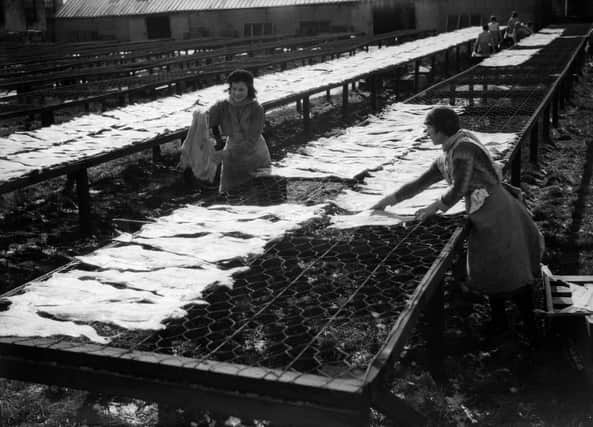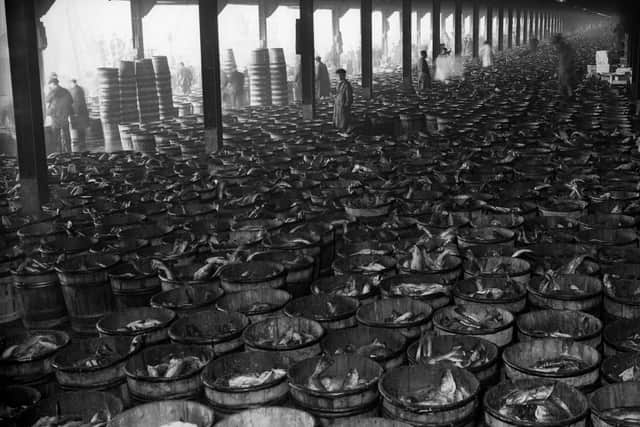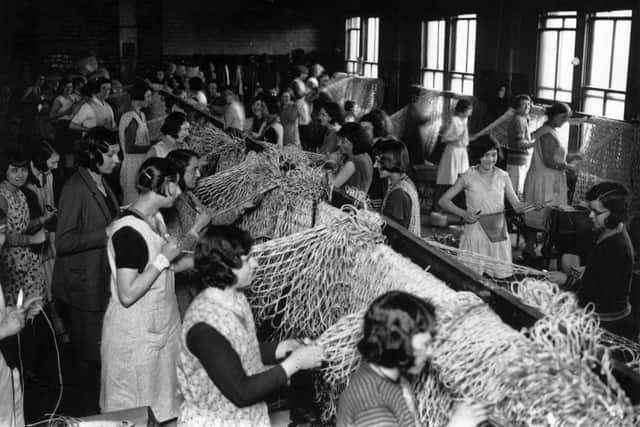Rare pictures of when trawlers ruled the waves on Yorkshire’s coast


From Marske, Saltburn and Redcar in the north to Hull in the south, the ports of the North and East Ridings constituted the largest fishing community in England, and today’s selection of rarely-seen pictures from the archive points to a time when trawlers dotted the waves.
From the 18th century to the first half of the last one, at least 25 ports had fishing boats working from them. The smaller locations could count the craft on the fingers of one hand, while in Bridlington, nearly 40 landed their catches. Even today, Brid remains the leading shellfish port in Europe.
Advertisement
Hide AdAdvertisement
Hide AdCod, haddock, whiting, plaice, sole, salmon, sea trout and squid were among the catches landed year-round at Whitby. It was also the main port for the landing of herring, with some boats fishing as far out as 60 miles.


Some of the first experiments in deep-sea trawling had been conducted slightly further south, off the Flamborough coast, early in the 19th century. But the craft most associated with the area remains the flat-bottomed fishing coble, which, with no need of a large harbour, could simply be pulled on to the beach when not in use.
Yet the economic benefits of fish to the region have never overshadowed the dangers faced by those who put to sea. Between 1808 and 1970, more than 400 ships were lost off the Yorkshire coast, around three-quarters directly or indirectly as the result of military action, and every winter a Lost Trawlermen’s Memorial service is held at St Andrew’s Dock in Hull.
Editor’s note: first and foremost - and rarely have I written down these words with more sincerity - I hope this finds you well.
Advertisement
Hide AdAdvertisement
Hide AdAlmost certainly you are here because you value the quality and the integrity of the journalism produced by The Yorkshire Post’s journalists - almost all of which live alongside you in Yorkshire, spending the wages they earn with Yorkshire businesses - who last year took this title to the industry watchdog’s Most Trusted Newspaper in Britain accolade.


And that is why I must make an urgent request of you: as advertising revenue declines, your support becomes evermore crucial to the maintenance of the journalistic standards expected of The Yorkshire Post. If you can, safely, please buy a paper or take up a subscription. We want to continue to make you proud of Yorkshire’s National Newspaper but we are going to need your help.
Postal subscription copies can be ordered by calling 0330 4030066 or by emailing [email protected]. Vouchers, to be exchanged at retail sales outlets - our newsagents need you, too - can be subscribed to by contacting subscriptions on 0330 1235950 or by visiting www.localsubsplus.co.uk where you should select The Yorkshire Post from the list of titles available.
If you want to help right now, download our tablet app from the App / Play Stores. Every contribution you make helps to provide this county with the best regional journalism in the country.
Sincerely. Thank you.
James Mitchinson, Editor